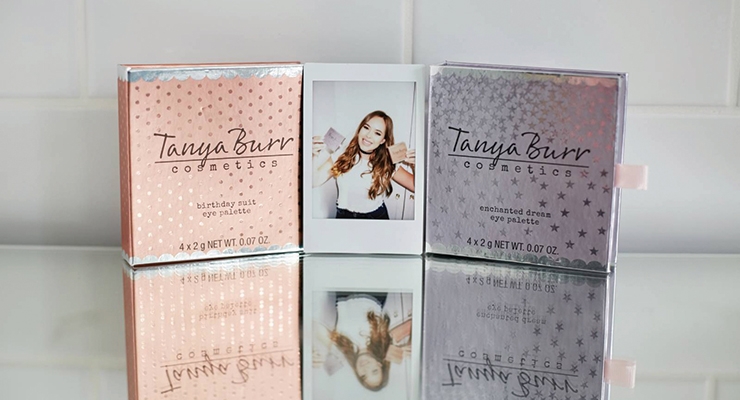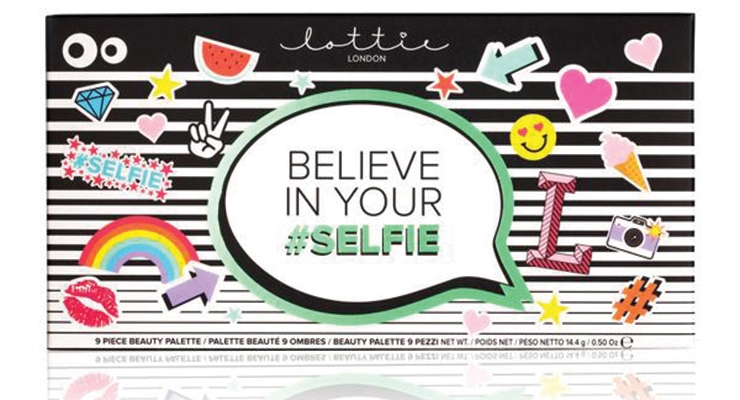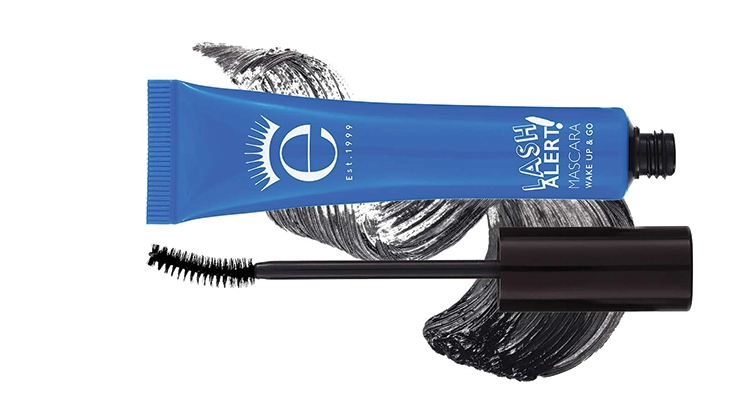Nick Dormon, Managing Director and Strategy Director at Echo Brand Design06.05.17
The world of fashion and beauty has always been fast paced, but in our instant digital influencer-based world, the beauty brand landscape is changing fast. Nimble, agile brands that don’t need a lot to survive (especially if a famous influencer is at their helm) are becoming a force to be reckoned with. Here we explore this culture through European brand examples. This shift is affecting packaging design and the role of heritage beauty brands in response to the trend-led challengers.
The rise of social media and the digital influencer has provided a new opportunity for niche beauty brands. These brands are often being coveted online as a result of being championed by an influential user. Therefore, consumer desire is already solidified way before the packaging is held in our hands. The desire to be the first to get hold of a new product arguably overrides the role of packaging to drive consumer choice. Branding is often done quickly, playing on trend-led visual codes and cues.
Kylie Cosmetics from Kylie Jenner is a well-known, hugely lucrative example of this, and in Europe we are seeing similar beauty brand launches from digital influencers like Tanya Burr. The design of the Tanya Burr Cosmetics range also plays on her name, creating a signature mark with a pastel color palette and use of a foil pattern. It is playful, targeting a young audience but the use of metallics helps to instill a sense of premium specialness.
Beauty brand Lottie London immediately connects with consumers’ desires to influence online, claiming the “search for selfie ready beauty is over.” Lottie London positions itself with “selfie beauty” in mind and as the home of #trendingbeauty. Lottie’s packaging design is again playful and trend-led, targeting the younger beauty consumer with hearts, stars, stripes and bold pops of color.
But it isn’t just the youngest consumers who are being targeted with trend-led, quick response beauty brand innovations. As part of London fashion week 2017, Eyeko has launched its LFW Beauty Pit-Stop, the Eyeko Eye Liner Bar in London’s Selfridges. In the beauty hall, experts are hands-on to help with tips and demos. Consumers are given the choice of eight different eye liner looks, from Alexa’s delicate flick, right through to Cleopatra’s diva-esque wing. Eyeko’s bold and impactful packaging combines an iconic brand mark, ownable blue-black color palette, and contemporary illustration.
So how can the heritage beauty brands respond to this quick fire, trend-led culture? The role of packaging design and branding is paramount to reflect the enduring quality and desire of beauty icons. Niche and trend-led beauty brands (and digital influencers alike) need more than anything to create a sense of authenticity, and this is not always easy when there is not much time for brand positioning or when a business is constantly thinking about what’s next. Trend-led products have inherently limited lifespans and so having longevity and authenticity provides a great advantage to longstanding beauty brands. These beauty brands can create enduring love from their consumers through their brand design, reminding people of why they have always been a beauty stalwart.
When this is done well, innovation can be exciting, relevant and brand inspired, allowing brands to cherish what made them special in a contemporary context. Although trends have their place, it is brand-inspired innovation that really leads to unique, meaningful new product design. This happens by defining a brand’s core values and purpose and placing these at the heart of a design-led innovation process.
For example, when Lancôme celebrated its 80th anniversary, it launched its original lip colors of L’Absolu Rouge along with a participatory, creative platform “You Are Lancome” where users were able to express their vision of the brand. Its celebratory brand film combined odes to heritage with contemporary nuances.
Agility however, is clearly key and the challenge is to be seen as an industry leader, being at the helm of future trends while maintaining brand authenticity.
We may be living in the world of niche, agile, trend-led beauty, but as a result, it is even more important for beauty stalwarts to showcase their craft, heritage, authenticity and enduring love through their packaging.
About the author:
Nick Dormon is managing director and strategy director at Echo Brand Design.
The rise of social media and the digital influencer has provided a new opportunity for niche beauty brands. These brands are often being coveted online as a result of being championed by an influential user. Therefore, consumer desire is already solidified way before the packaging is held in our hands. The desire to be the first to get hold of a new product arguably overrides the role of packaging to drive consumer choice. Branding is often done quickly, playing on trend-led visual codes and cues.
Kylie Cosmetics from Kylie Jenner is a well-known, hugely lucrative example of this, and in Europe we are seeing similar beauty brand launches from digital influencers like Tanya Burr. The design of the Tanya Burr Cosmetics range also plays on her name, creating a signature mark with a pastel color palette and use of a foil pattern. It is playful, targeting a young audience but the use of metallics helps to instill a sense of premium specialness.
Beauty brand Lottie London immediately connects with consumers’ desires to influence online, claiming the “search for selfie ready beauty is over.” Lottie London positions itself with “selfie beauty” in mind and as the home of #trendingbeauty. Lottie’s packaging design is again playful and trend-led, targeting the younger beauty consumer with hearts, stars, stripes and bold pops of color.
But it isn’t just the youngest consumers who are being targeted with trend-led, quick response beauty brand innovations. As part of London fashion week 2017, Eyeko has launched its LFW Beauty Pit-Stop, the Eyeko Eye Liner Bar in London’s Selfridges. In the beauty hall, experts are hands-on to help with tips and demos. Consumers are given the choice of eight different eye liner looks, from Alexa’s delicate flick, right through to Cleopatra’s diva-esque wing. Eyeko’s bold and impactful packaging combines an iconic brand mark, ownable blue-black color palette, and contemporary illustration.
So how can the heritage beauty brands respond to this quick fire, trend-led culture? The role of packaging design and branding is paramount to reflect the enduring quality and desire of beauty icons. Niche and trend-led beauty brands (and digital influencers alike) need more than anything to create a sense of authenticity, and this is not always easy when there is not much time for brand positioning or when a business is constantly thinking about what’s next. Trend-led products have inherently limited lifespans and so having longevity and authenticity provides a great advantage to longstanding beauty brands. These beauty brands can create enduring love from their consumers through their brand design, reminding people of why they have always been a beauty stalwart.
When this is done well, innovation can be exciting, relevant and brand inspired, allowing brands to cherish what made them special in a contemporary context. Although trends have their place, it is brand-inspired innovation that really leads to unique, meaningful new product design. This happens by defining a brand’s core values and purpose and placing these at the heart of a design-led innovation process.
For example, when Lancôme celebrated its 80th anniversary, it launched its original lip colors of L’Absolu Rouge along with a participatory, creative platform “You Are Lancome” where users were able to express their vision of the brand. Its celebratory brand film combined odes to heritage with contemporary nuances.
Agility however, is clearly key and the challenge is to be seen as an industry leader, being at the helm of future trends while maintaining brand authenticity.
We may be living in the world of niche, agile, trend-led beauty, but as a result, it is even more important for beauty stalwarts to showcase their craft, heritage, authenticity and enduring love through their packaging.
About the author:
Nick Dormon is managing director and strategy director at Echo Brand Design.
































